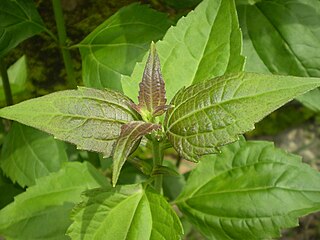
Chromolaena odorata is a tropical and subtropical species of flowering shrub in the family Asteraceae. It is native to the Americas, from Florida and Texas in the United States south through Mexico and the Caribbean to South America. It has been introduced to tropical Asia, West Africa, and parts of Australia.

Iva is a genus of wind-pollinated plants in the family Asteraceae, described as a genus by Linnaeus in 1753. Plants of this genus are known generally as marsh elders. The genus is native to North America.
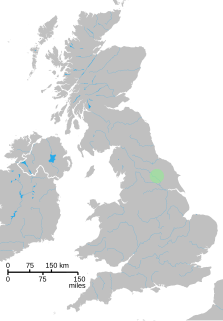
Senecio eboracensis, the York groundsel or York radiate groundsel, is a flowering plant in the daisy family Asteraceae. It is a self-pollinating hybrid species of ragwort and one of only six new plant species to be discovered in either the United Kingdom or North America in the last 100 years. It was discovered in 1979 in York, England growing next to a car park and formally described in 2003. Like many of the Senecio genus it can be found growing in urban habitats, such as disturbed earth and pavement cracks and this particular species only in York and between a railway and a car park.

Arbutus xalapensis, commonly known as the Texas madrone, naked Indian tree or Texas madroño, is a species of flowering plant in the heather family. It is native to Central America, the southwestern United States, and throughout Mexico. It is found in canyons and mountains, on rocky plains, and in oak woodlands, at altitudes of up to 3,000 m in the south of the range, but lower, down to 600 m in the north of the range.

Coreopsis tripteris is a North American species of flowering plant in the family Asteraceae. It is widespread across much of eastern and central North America from the Florida Panhandle west as far as eastern Texas and north to Québec and Ontario. Its common names include tall tickseed, tall coreopsis, and Atlantic coreopsis.
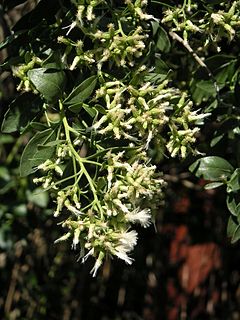
Baccharis halimifolia is a North American species of shrubs in the family Asteraceae. It is native to Nova Scotia, the eastern and southern United States, eastern Mexico, the Bahamas, and Cuba.

Eriophyllum confertiflorum, commonly called golden yarrow or yellow yarrow, is a North American species of plant in the family Asteraceae, native to California and Baja California. It has wooly leaves when young, and yellow flower heads. "Eriophyllum" means "wooly leaved."
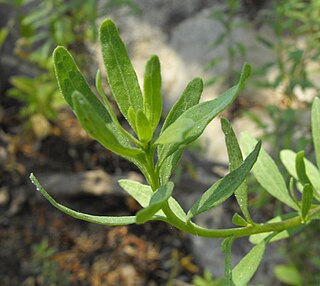
Iva hayesiana is a species of flowering plant in the family Asteraceae known by the common names San Diego marsh-elder and San Diego povertyweed.
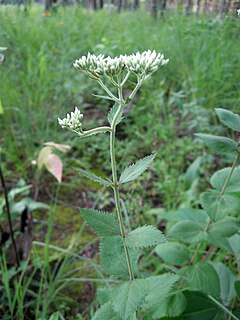
Eupatorium rotundifolium, commonly called roundleaf thoroughwort, is a North American species of plant in the family Asteraceae. It native to the eastern and central United States, in all the coastal states from Maine to Texas, and inland as far as Missouri and the Ohio Valley. It is found in low, moist habitats such as wet savannas and bogs.

Pluchea odorata is a species of flowering plant in the aster family, Asteraceae. Common names include sweetscent, saltmarsh fleabane and shrubby camphorweed.

Iva frutescens is a species of flowering plant in the family Asteraceae known by the common names Jesuit's bark, bigleaf marsh-elder, and high-tide bush. It grows in coastal eastern North America from Nova Scotia down the eastern coast and along the Gulf Coast to Texas.

Cyclachaena xanthiifolia, known as giant sumpweed, or rag sumpweed is a North American plant species in the sunflower family, Asteraceae. It is the only species in the genus Cyclachaena. Giant sumpweed is believed to be native to the Great Plains but is now found across much of southern Canada and the contiguous United States, though rarely in the Southeast.

Iva imbricata is a North American species of flowering plant in the family Asteraceae known by the common names dune marsh-elder and seacoast marsh elder. It is native to Cuba, the Bahamas, and coastal areas of the United States from Texas to Virginia. It is a low shrub, found on sand dunes and the upper beach. It is a highly salt tolerant plant, and is often the perennial plant closest to the ocean.

Gaillardia pinnatifida, the Hopi blanketflower or red dome blanketflower, is a perennial plant in the sunflower family (Asteraceae) found in northern Mexico and in the south-central and southwestern United States.
Cirsium nuttallii, called Nuttall's thistle, is a North American species of plants in the tribe Cardueae within the family Asteraceae. The species is native to the coastal plain of the southeastern and south-central United States, from eastern Texas to southeastern Virginia.

Solidago nana is a North American plant species in the family Asteraceae, with the common names baby goldenrod and dwarf goldenrod. The species is native to deserts and mountainsides in the western United States, from the Rocky Mountains to the Great Basin in the states of Idaho, Montana, Nevada, Utah, Wyoming, Colorado, Arizona, and New Mexico.

Iva angustifolia is a species of flowering plant in the family Asteraceae known by the common name narrowleaf marsh elder. It grows in the south-central and southeastern United States.
Iva asperifolia, the Pensacola marsh elder, is a species of flowering plant in the family Asteraceae. It grows in the south-central United States. It has also been found in the state of Veracruz in eastern Mexico.

Iva axillaris, called povertyweed or death weed, is a North American species of flowering plants in the family Asteraceae. It grows in the western and central United States and in western Canada, from British Columbia south to California and east as far as the western Great Plains in the Texas Panhandle, Nebraska, the Dakotas, and Manitoba. It has also become established in Australia, where it is considered a weed.
Iva microcephala, the piedmont marsh elder, is a North American species of flowering plants in the family Asteraceae. It grows in the southeastern United States in Alabama, Florida, Georgia, and the Carolinas.
















